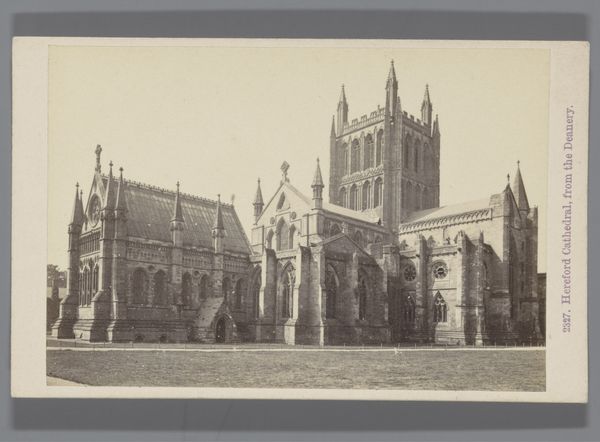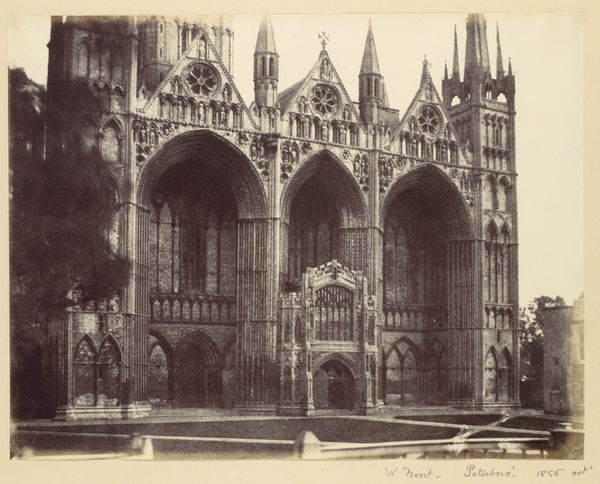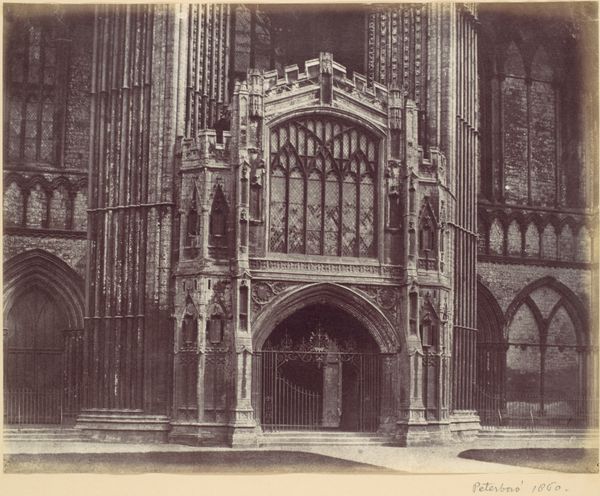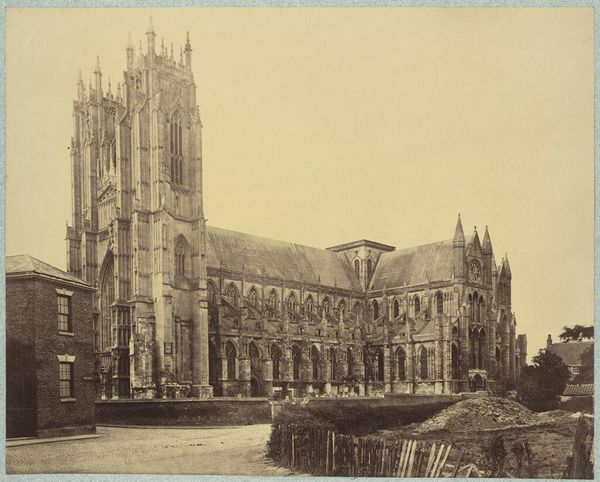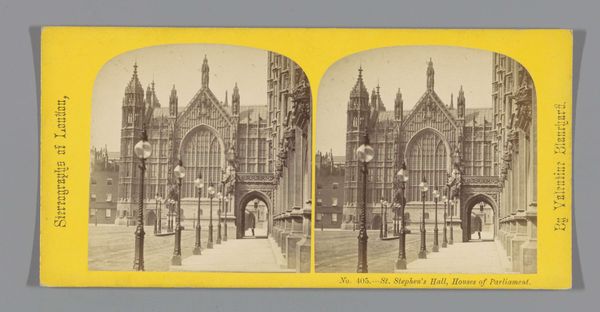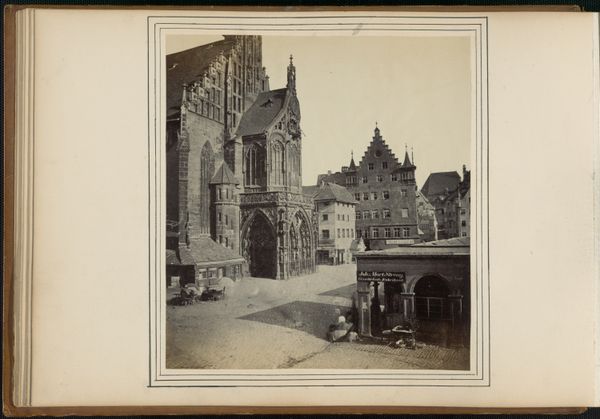
Dimensions: image: 35.2 x 43 cm (13 7/8 x 16 15/16 in.) mount: 50.7 x 68.5 cm (19 15/16 x 26 15/16 in.)
Copyright: National Gallery of Art: CC0 1.0
Editor: So, this is Roger Fenton's "Lichfield Cathedral from the North-West," a gelatin silver print from 1858. It's a pretty straightforward depiction, but something about the detail and the almost haunting light creates this solemn atmosphere. How do you interpret this work? Curator: For me, it's impossible to separate this image from its historical context. The 1850s in England were a time of huge social upheaval, massive industrial expansion, and rigid class structures. Fenton, often associated with photographing the Crimean War, here turns his lens towards a monument of established power: the Church. Consider, what does it mean to monumentalize a symbol of traditional authority just as those structures were being challenged by the rise of the industrial working class and burgeoning social movements? Editor: That's a perspective I hadn't considered. I was really focused on just the architecture. So, you're suggesting the image is more than just a photograph of a building? Curator: Absolutely. Look at the composition. The imposing cathedral dominates the frame, but it's viewed from an angle, not head-on. Is this a subtle critique of the unyielding nature of institutional power, or simply an aesthetic choice? How do you read that physical distance created through photographic perspective? Editor: That’s interesting! I guess I see how Fenton could be subtly questioning that authority. Curator: Exactly. And it’s vital to remember Fenton's position within the Victorian class system. He was documenting a power structure he benefitted from, while perhaps being aware of the social costs. Are there aspects to the romantic style which allow you to read his perspective on that time? Editor: I see what you mean. Considering the historical backdrop makes the image much more complex. Curator: Precisely. What appears straightforward reveals layered commentaries on faith, power, and societal transformation when viewed through an intersectional lens. Editor: It really makes you rethink what photography was doing at that time. I’ll never look at historical photographs the same way.
Comments
No comments
Be the first to comment and join the conversation on the ultimate creative platform.

